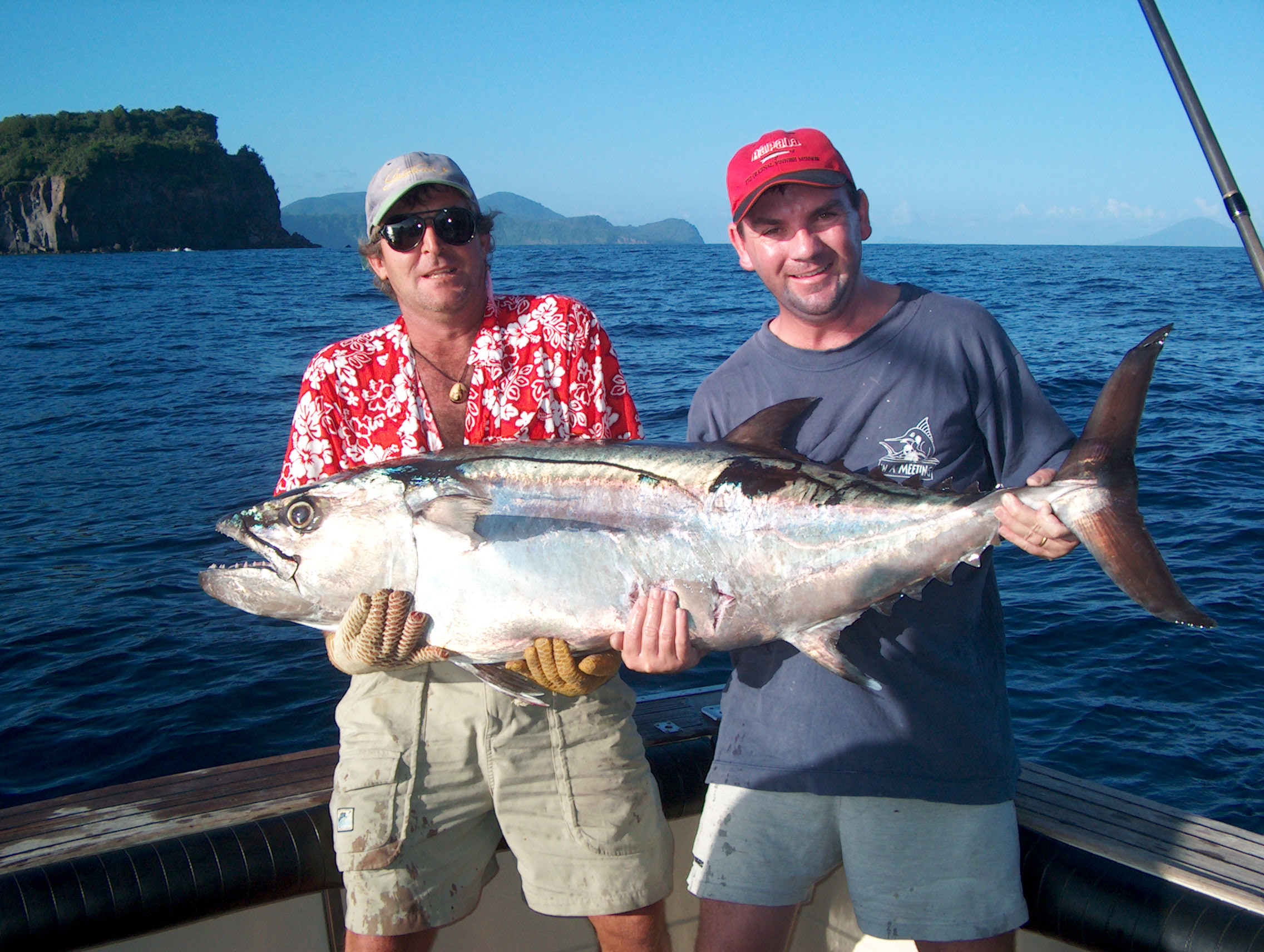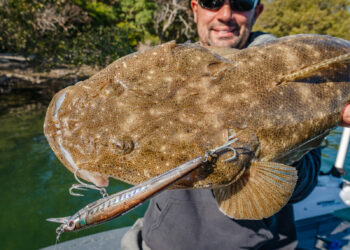
OF all the worlds tunas, I find the dogtooth tuna (Gymnosarda unicolor) the most interesting species. Firstly they are not technically a “true” tuna, but instead they are the largest of the bonitos. Secondly, they possess a large swimbladder which allows them to frequent different habitats and behave very differently to the other “true” tropical tunas like yellowfin and skipjack. And it is these differences that make the dogtooth tuna one of the most imposing tropical sportfishing targets in the world.
Dogtooth, or doggies, are found around coral reefs and atolls in the Indian and Western Pacific oceans, as well as in the Red Sea. Their distribution is mostly restricted to depths of less than 100m in water temperatures between 20 and 28°C. Their name is derived from their impressive array of canine-like conical teeth. In an evolutionary sense these teeth hint to the intermediate position of the bonitos, which lie between the lethal dentistry of the mackerels and the scarcely toothed tunas. Of course, these teeth also hint that dogtooth are fierce predators of other fish. They eat a wide variety of fish and squid, including reef associated species. Because they often prey on reef fish, dogtooth are recognised carriers of ciguatera toxin in some locations.
Observations by divers suggest that adult dogtooth patrol areas of reef edge but may also frequent certain high current locations adjacent to structure such as large coral bommies. The presence of the large swimbladder suggests that in these circumstances, dogtooth may be able to hold station in the current and act as “ambush” predators, in stark contrast to the highly mobile tunas and bonitos which tend to spend most of their time in pursuit of prey.
The large swimbladder can also sometimes cause barotrauma problems when catch and release techniques are used, especially after long fight times when the fish may experience lactic acidosis. Because of their affinity for structure, their large growth potential (to over 2 meters and 130+ kg), and tuna-like swimming abilities, large dogtooth are extremely difficult to extract from their chosen haunts using sportfishing gear, nevertheless, recent advances in heavy spinning tackle with braided lines has seen some impressive captures over the past decade or so (Click here to see Michael Bonnici’s 101kg dogtooth tuna).
Scientific reviews of the biology of dogtooth note that, where they have been encountered by commercial fleets, initial high catch rates rapidly diminish. This could indicate that the highly aggressive dogtooth is particularly vulnerable to overfishing, and that localised populations of dogtooth are very susceptible to depletion. Indeed, initial tagging data from Australia suggests that adult dogtooth tuna are sedentary species that do not move very far from particular reefs. But experienced fishers have also noted that reductions in catch rates may also be explained by other factors such as learned avoidance of lures. This may indicate that resident populations of dogtooth adapt quickly to fishing and that their catchability decreases under continued fishing pressure.
The latter theory could be validated to a certain extent by recent scientific work that has investigated the genetic structure of populations of dogtooth tuna throughout the Indo-West Pacific region. Scientists found there was no significant genetic differentiation between fish from different ocean basins, although on a microscale level fish captured from isolated atolls tended to be more closely related to each other. This was interpreted to suggest that the eggs and larvae of dogtooth tuna are dispersed widely by currents and that at least some juvenile dogtooth may travel large distances before recruiting to isolated coral atolls. This type of reproductive pattern is likely to result in patchy recruitment over broad areas which could make isolated populations vulnerable to fishing over short time periods, but not prone to permanent local depletion.
Besides the genetic work, very else little is known about the biology of this species. The presence of larval dogtooth tuna (2 – 9mm long but already complete with a mouthful of fangs!) has been recorded during summer in the Western Pacific, suggesting that spawning occurs over the summer months. Japanese data collected by squid fishing boats (which used powerful lights to attract juvenile dogtooth at night) indicates growth in juveniles is moderate, reaching around 45cm and 1.1kg in the first year. Length at first maturity is thought to be around 65cm.

















